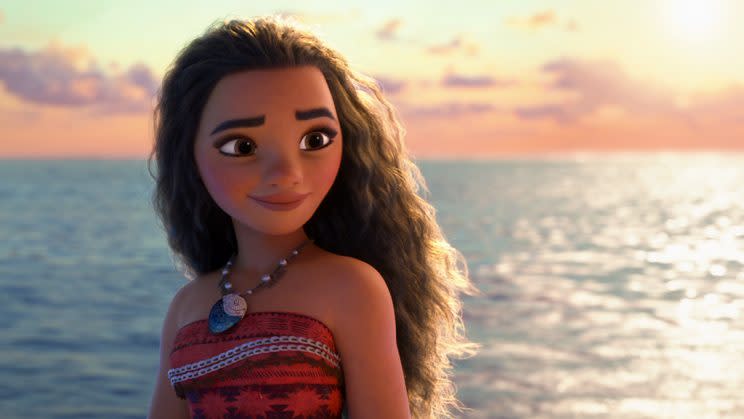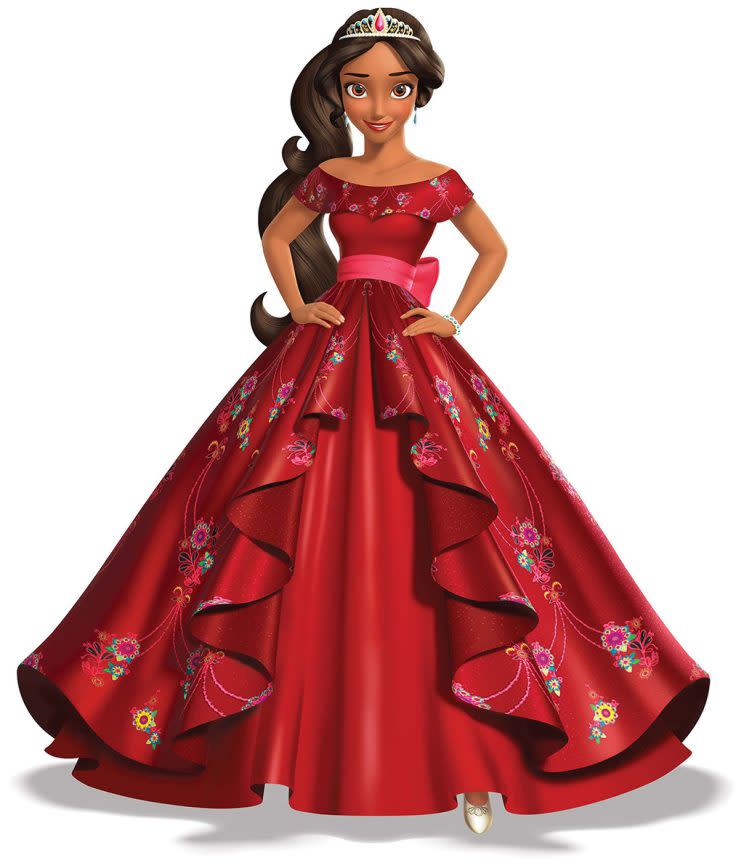Disney’s New Princesses Do Not Need Men to Rule the World

“Some day my prince will come, some day we’ll meet again — and away to his castle we’ll go, to be happy forever I know…” go the classic Snow White lyrics. And though the song is from 1937, the message — that it takes a man to come along and make everything okay — has stayed pretty much the same throughout the decades, at least in the world of Disney. But now that’s changing, with the latest Disney princess movie, Moana, and a new TV series, Elena of Avalor. That’s because neither princess has a love interest.
Moana, set 2,000 years ago in the South Pacific, is the story of a 16-year-old girl who goes in search of a banished demi god named Maui so she can save the world. Elena, meanwhile, is the first Latina princess in the Disney lineup, and will also exist — and thrive — without a love interest by her side. She’s a teenage royal who will star in the Disney TV series, premiering Friday night.
“Not only is Disney working to build up its inclusiveness by centering a TV series around its first Latina princess, it’s also continuing the push for its princesses to create their own narratives that don’t revolve around snaring the affections of a man,” reports Fast Company. So instead of trying to win the affections of a chivalrous young many, Elena (who is orphaned, naturally) will apparently be focused on leading her fictional country and protecting her people.

That’s good news to this mom of a young daughter — even if I do remain skeptical, as every Disney princess show or movie I’ve ever witnessed simply cannot help but toss in some batting eyes and coy blushing on the part of its female lead. That even goes for Frozen, which many have praised for staying away from the classic rescuing-prince narrative — but which still, despite its twist at the end, made flirting, love-yearning, and mate-snagging a priority for Elsa (even though the target viewer age was somewhere around 6).
“I think this is movement in the right direction, to show girls that they don’t need somebody to rescue them,” Barbara Greenberg, a Connecticut-based adolescent and teenage psychologist, tells Yahoo Style. “So many girls grow up with rescue fantasies.”
With Disney princesses, she notes, “The message has always been, ‘No matter how bad you have it, if you can attract a man with resources, you’ll be okay.’ But if you’ve had a really hard life, that won’t fix you emotionally.” And sending such a message anyway, Greenberg notes, “starts girls out feeling like they are less than whole — and won’t be whole until they meet someone. Boys don’t get that message.”
Sierra Filucci, executive editor of parenting content for Common Sense Media, stresses the importance of having something besides romance as a goal in films targeting young girls, and applauds the introduction of Elena and Moana.
“It’s about time! For too long girls have been getting the message from movies that their primary goal should be to find true love. And while love is great, romance is not an age-appropriate goal for Disney’s primary audience of preschoolers and early elementary-aged kids,” Filucci tells Yahoo Style. “Kids this age are just learning about gender and figuring out what society expects of girls and boys. An emphasis on romance — which has been part of so many previous Disney movies — reinforces stereotypes about girls’ primary goals and interests. Common Sense is excited to see a movie that empowers girls and shows all kids that striving for goals, helping friends and family, and having fun are the best parts of growing up.”


